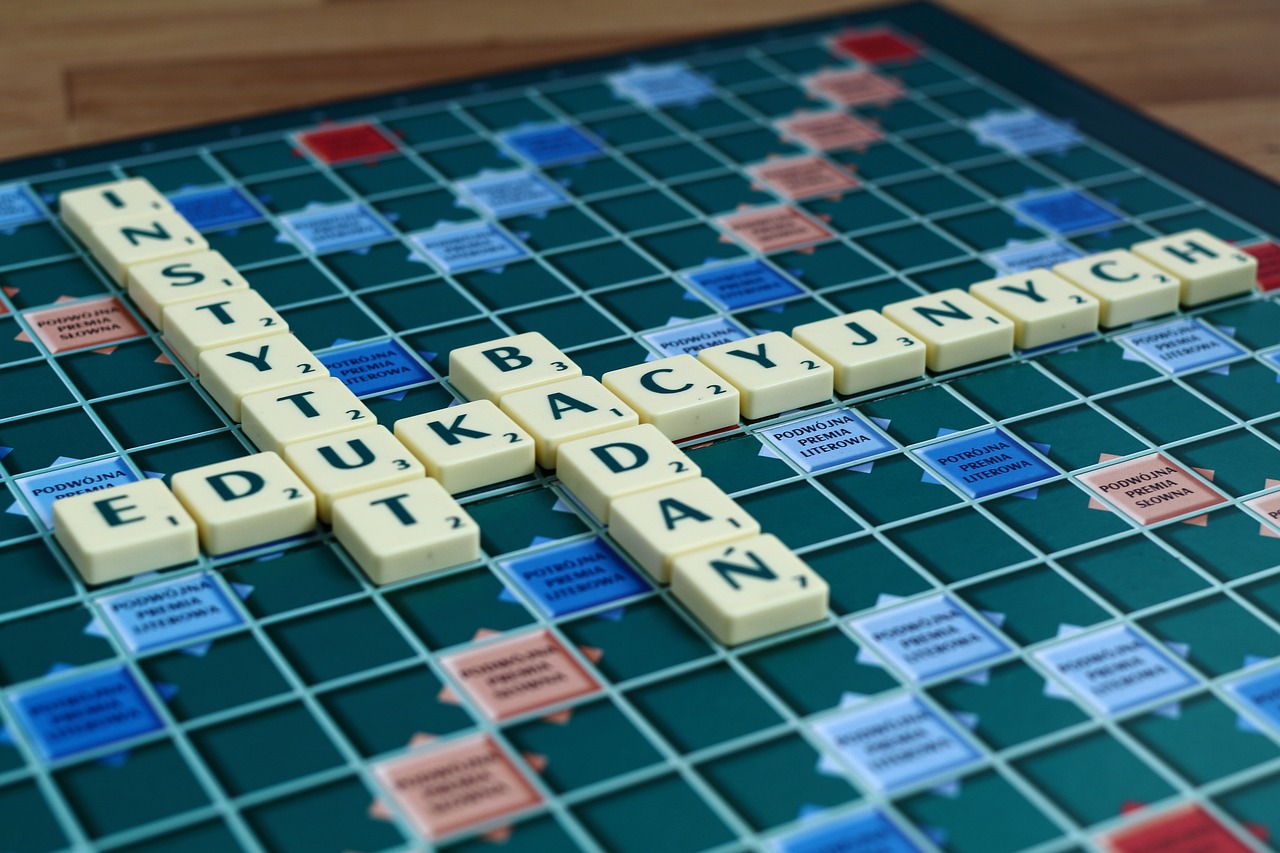This article serves as a comprehensive guide to understanding the West Bengal Board of Secondary Education (WBBSE) system. It covers essential aspects such as its structure, examination process, and practical tips for students and parents, ensuring that you have all the information needed to navigate this educational framework effectively.
Understanding the West Bengal Board
The WBBSE plays a crucial role in regulating secondary education in West Bengal. Established to provide quality education, the board aims to ensure that students receive a well-rounded education that prepares them for future challenges. Its significance in the education landscape cannot be overstated, as it sets the standards for schools across the state.
Structure of the WBBSE
The organizational structure of the WBBSE comprises various departments, each with specific roles and responsibilities. This structure is essential for the efficient functioning of the board.
- Key Officials and Their Roles: The board is led by key officials, including the Chairman, who plays a vital role in decision-making and policy formulation.
- Departments within WBBSE: Various departments focus on curriculum development, examination management, and student welfare.
Examination Process in WBBSE
The examination process is a critical component for students. The WBBSE conducts several types of examinations, including the Madhyamik (Class 10) exams. Understanding the examination schedule, grading system, and evaluation process is essential for academic success.
- Types of Examinations: Detailed information about the structure and purpose of each examination.
- Grading and Evaluation: Insights into how grades are calculated and their significance in a student’s academic journey.
Curriculum and Syllabus
The curriculum set by the WBBSE determines the subjects taught in schools. Regular updates to the syllabus are crucial to keep pace with educational advancements.
- Subject Offerings: An overview of core and elective subjects available for secondary education.
- Importance of Curriculum Updates: Discussing the necessity of regular updates for enhancing student learning.
Tips for Students and Parents
Navigating the WBBSE system can be daunting. Here are some practical tips:
- Effective Study Techniques: Strategies for efficient studying and exam preparation.
- Parental Support and Involvement: Ways parents can actively support their children’s education.
Conclusion: A Guide to Success in WBBSE
In conclusion, understanding the WBBSE system is vital for both students and parents. This article consolidates essential information to aid in navigating this educational framework effectively, ensuring that students can achieve academic success.

Understanding the West Bengal Board
The West Bengal Board of Secondary Education (WBBSE) plays a crucial role in shaping the educational landscape of West Bengal. Established in 1951, the board has evolved to meet the changing needs of students and the educational system. This article delves into the history, objectives, and significance of the WBBSE, providing a comprehensive understanding of its impact on secondary education in the state.
History of WBBSE
The formation of WBBSE was a significant step towards standardizing secondary education in West Bengal. Initially, the board was tasked with overseeing the Madhyamik examinations, which are conducted at the end of Class 10. Over the years, the board has expanded its responsibilities, ensuring that educational standards align with national policies and regional needs.
Objectives of WBBSE
- To regulate and supervise secondary education in West Bengal.
- To conduct examinations for secondary school students.
- To develop curriculum and syllabus that meet contemporary educational standards.
- To promote educational research and innovation.
Significance in the Education Landscape
The WBBSE is not just a regulatory body; it plays a pivotal role in shaping the future of students. By establishing a robust framework for education, the board ensures that students are equipped with the necessary skills and knowledge to succeed in higher education and beyond. The board’s emphasis on quality education fosters a competitive spirit among students, preparing them for various challenges in life.
In conclusion, the West Bengal Board of Secondary Education is a cornerstone of the state’s educational framework. Its rich history, clear objectives, and significant impact on education make it an essential institution for students, educators, and policymakers alike.

Structure of the WBBSE
The organizational structure of the West Bengal Board of Secondary Education (WBBSE) is designed to ensure efficient management and regulation of secondary education across the state. Understanding this structure is crucial for students, educators, and parents alike, as it clarifies the roles and responsibilities of various departments and officials within the board.
At the helm of the WBBSE is the Chairman, whose leadership is vital for the board’s overall direction and policy-making. The Chairman is supported by a team of key officials, including the Secretary, who oversees day-to-day operations, and other departmental heads responsible for specific functions such as curriculum development, examination management, and student services.
| Department | Key Responsibilities |
|---|---|
| Examination Department | Manages the planning, scheduling, and administration of all board examinations. |
| Curriculum Development | Responsible for designing and updating the syllabus to meet educational standards. |
| Student Services | Provides support and guidance to students regarding academic and personal issues. |
| Administrative Department | Handles the board’s administrative functions, including human resources and finance. |
Each department plays a significant role in ensuring that the board operates smoothly and effectively. For example, the Examination Department not only conducts examinations but also implements measures to maintain integrity and fairness in the assessment process. Meanwhile, the Curriculum Development team continuously reviews and revises educational materials to align with current educational practices and student needs.
Moreover, the WBBSE emphasizes collaboration among departments to foster a cohesive educational environment. Regular meetings and updates ensure that all departments are aligned with the board’s goals and objectives, ultimately benefiting the students and schools under its jurisdiction.
In summary, the structure of the WBBSE is designed to promote efficiency and effectiveness in managing secondary education. Understanding this structure helps stakeholders navigate the educational landscape more effectively, ensuring that students receive the support and resources they need to succeed.
Key Officials and Their Roles
The West Bengal Board of Secondary Education (WBBSE) plays a crucial role in shaping the educational landscape of the state. Understanding the key officials and their responsibilities is essential for grasping how the board functions effectively. Below is an overview of the significant roles within the WBBSE, including the Chairman and other vital personnel.
The WBBSE is governed by a team of dedicated officials who ensure that the board operates smoothly and efficiently. Each official has distinct responsibilities that contribute to the overall management of secondary education in West Bengal.
- Chairman: The Chairman is the highest authority in the WBBSE, responsible for leading the board and making strategic decisions. Their role includes overseeing policy formulation, managing the board’s financial resources, and representing the board in educational forums.
- Secretary: The Secretary serves as the administrative head of the board, handling day-to-day operations. This position involves coordinating examination schedules, managing staff, and ensuring compliance with educational regulations.
- Controller of Examinations: This official is crucial for the planning and execution of examinations. They oversee the entire examination process, including question paper preparation, conducting exams, and managing results.
- Director of Curriculum: The Director of Curriculum is responsible for developing and updating the educational syllabus. They ensure that the curriculum meets educational standards and incorporates modern teaching methodologies.
- Finance Officer: The Finance Officer manages the board’s financial matters, including budgeting, accounting, and financial reporting. They play a key role in ensuring the board’s financial health.
Each of these officials collaborates to ensure that the WBBSE meets its objectives of providing quality education and maintaining high academic standards. Their combined efforts are essential in navigating the challenges of the educational sector and fostering an environment conducive to learning.
In conclusion, understanding the roles of key officials within the WBBSE provides valuable insights into the board’s operational framework. Their leadership and dedication significantly impact the educational experiences of students across West Bengal.
Chairman of WBBSE
The role of the Chairman of the West Bengal Board of Secondary Education (WBBSE) is not just ceremonial; it is crucial for the effective leadership and strategic direction of the board. This position carries significant responsibilities that impact the educational landscape of West Bengal.
Firstly, the Chairman acts as the primary decision-maker within the board, guiding policies that shape the educational framework. This includes overseeing the development of curricula, examination standards, and ensuring compliance with educational regulations. The Chairman’s decisions directly influence the quality of education that students receive, making their role pivotal in maintaining educational standards.
In addition to administrative duties, the Chairman plays a vital role in fostering collaboration among various stakeholders, including educators, government officials, and parents. By facilitating discussions and encouraging input from these groups, the Chairman helps to create a more inclusive educational environment. This collaborative approach ensures that the policies implemented are reflective of the needs and aspirations of the community.
Moreover, the Chairman is responsible for representing the WBBSE in various forums, both at the state and national levels. This representation is critical for advocating the interests of the board and securing necessary resources for the improvement of educational facilities. The Chairman’s ability to communicate effectively with policymakers can lead to significant advancements in educational policies that benefit students across the state.
In conclusion, the role of the Chairman of WBBSE is multifaceted, encompassing leadership, policy-making, and advocacy. By effectively managing these responsibilities, the Chairman not only influences the board’s operations but also contributes to the overall enhancement of the educational system in West Bengal.
Other Key Personnel
Within the West Bengal Board of Secondary Education (WBBSE), the contributions of various officials extend far beyond the role of the Chairman. These key personnel are essential in ensuring the smooth operation and effective governance of the board. Their diverse responsibilities play a significant role in shaping the educational landscape of the state.
- Secretary: The Secretary of WBBSE is responsible for the day-to-day administration of the board. This role involves overseeing the implementation of policies, managing staff, and ensuring that all operations align with educational standards. The Secretary acts as a crucial link between the board and educational institutions.
- Examination Controller: Tasked with managing the examination process, the Examination Controller ensures that assessments are conducted fairly and transparently. This includes setting exam schedules, coordinating with schools, and overseeing the evaluation process to maintain integrity in student assessments.
- Curriculum Development Officer: The Curriculum Development Officer plays a vital role in updating and refining the syllabus. They collaborate with educators to incorporate new teaching methods and subjects, ensuring that the curriculum remains relevant and comprehensive, thus enhancing students’ learning experiences.
- Finance Officer: Responsible for managing the board’s financial resources, the Finance Officer ensures that funds are allocated efficiently. This role is crucial for maintaining the board’s financial health and supporting various educational initiatives.
- IT Coordinator: In an increasingly digital world, the IT Coordinator is essential for integrating technology into the education system. They oversee the board’s technological infrastructure, ensuring that schools have access to the necessary resources for effective teaching and learning.
Each of these officials brings unique expertise to the table, contributing to the overall mission of the WBBSE to provide quality education. Their collaborative efforts ensure that the board not only meets regulatory standards but also adapts to the evolving needs of students and educators alike.
Departments within WBBSE
The West Bengal Board of Secondary Education (WBBSE) is a vital institution in the state’s education system, overseeing various aspects of secondary education. Within the WBBSE, several specialized departments work collaboratively to ensure the smooth operation of educational processes. Below, we will explore the key departments, their functions, and how they contribute to the overall framework of secondary education in West Bengal.
- Curriculum Development Department
This department is responsible for designing and updating the curriculum offered to students. It ensures that the syllabus remains relevant and aligned with modern educational standards and practices. Regular assessments and feedback from educators help shape the curriculum to meet the needs of students effectively.
- Examination Management Department
The Examination Management Department oversees the entire examination process, from planning to execution. This includes setting exam schedules, preparing question papers, and ensuring the integrity of the examination process. They also handle the evaluation and result declaration, which is crucial for maintaining transparency and fairness.
- Student Welfare Department
Focusing on the holistic development of students, the Student Welfare Department addresses issues related to student health, counseling, and extracurricular activities. They work to create a supportive environment that fosters personal and academic growth.
- Administrative Department
The Administrative Department manages the day-to-day operations of the board. This includes human resources, financial management, and logistical support for various board activities. Their role is essential in ensuring that all departments function smoothly.
- Research and Development Department
This department focuses on educational research, exploring innovative teaching methods and learning strategies. By analyzing trends and outcomes, they provide insights that help improve the quality of education within the state.
Each of these departments plays a critical role in shaping the educational landscape of West Bengal. By working together, they ensure that the WBBSE meets its objectives and continues to provide quality education for all students.

Examination Process in WBBSE
Understanding the examination process is essential for students aiming to succeed in their academic journey. The West Bengal Board of Secondary Education (WBBSE) implements a structured and comprehensive examination system that is pivotal for evaluating students’ knowledge and skills. This section delves into the various types of examinations conducted, their schedules, and the grading systems employed by the WBBSE.
Types of Examinations
- Madhyamik Examination: This is the most significant examination for students completing their secondary education. It assesses students in various subjects at the end of Class 10.
- Summative Assessments: These are conducted periodically throughout the academic year to evaluate students’ understanding and retention of the curriculum.
- Formative Assessments: These assessments focus on continuous evaluation and feedback, helping students improve their learning process.
Examination Schedules
The WBBSE publishes a detailed examination schedule well in advance, allowing students ample time to prepare. The timetable includes dates for practical exams and theoretical papers, ensuring that students can plan their studies effectively. Typically, the Madhyamik examinations are held in February or March each year.
Grading System
The grading system employed by WBBSE is designed to provide a clear assessment of student performance. Students are graded on a scale from A+ to E, with A+ being the highest grade. The grading criteria take into account both theory and practical marks, ensuring a holistic evaluation of each student’s capabilities. The final grades play a crucial role in determining students’ eligibility for higher secondary education.
Conclusion
In conclusion, the examination process of WBBSE is comprehensive and structured, providing a clear framework for evaluating student performance. By understanding the types of examinations, their schedules, and the grading system, students can better prepare for their academic challenges and achieve their educational goals.
Types of Examinations
The West Bengal Board of Secondary Education (WBBSE) plays a crucial role in shaping the academic journey of students through various examinations. Understanding these examinations is essential for students, parents, and educators alike. This section delves into the different types of examinations conducted by the WBBSE, highlighting their purposes, structures, and significance.
- Madhyamik Examination: This is the most significant examination for students in the 10th grade. It serves as a benchmark for secondary education, assessing students’ knowledge across various subjects, including languages, mathematics, and sciences. The Madhyamik examination is pivotal for students as it determines their eligibility for higher secondary education.
- Higher Secondary Examination: Conducted for students in the 12th grade, this examination is critical for those seeking admission to colleges and universities. It evaluates a broader range of subjects, allowing students to specialize in their preferred streams, such as Science, Arts, or Commerce.
- Supplementary Examinations: These are held for students who do not pass their initial examinations. The supplementary exams provide a second chance for students to clear their subjects, ensuring that they do not fall behind in their academic progress.
- Formative Assessments: WBBSE also emphasizes continuous evaluation through periodic assessments conducted throughout the academic year. These assessments help gauge student understanding and provide feedback for improvement.
- Project Work and Practical Examinations: Certain subjects require students to complete projects or practical assessments, which are essential for a comprehensive understanding of the curriculum. These evaluations encourage hands-on learning and critical thinking.
Each of these examinations is designed with a specific purpose, ensuring that students are well-prepared for their future academic and professional endeavors. By understanding the structure and significance of these exams, students can better navigate their educational paths.
Grading and Evaluation
The grading and evaluation system employed by the West Bengal Board of Secondary Education (WBBSE) plays a pivotal role in assessing student performance and guiding their academic journeys. Understanding this system is essential for students, parents, and educators alike, as it provides insight into how achievements are quantified and recognized.
At the core of the WBBSE grading system is the comprehensive evaluation of students’ knowledge and skills. Grades are typically assigned based on a combination of theoretical examinations, practical assessments, and internal evaluations. This multifaceted approach ensures that students are not only tested on their memorization skills but also on their ability to apply concepts in real-world scenarios.
| Grade | Percentage Range | Remarks |
|---|---|---|
| A+ | 90-100% | Outstanding Performance |
| A | 80-89% | Excellent Performance |
| B | 60-79% | Good Performance |
| C | 40-59% | Average Performance |
| D | 33-39% | Needs Improvement |
| F | 0-32% | Fail |
Each grade carries significant weight in a student’s academic record, influencing not only their immediate educational opportunities but also their long-term career prospects. For instance, achieving a grade of ‘A’ or higher can open doors to advanced studies and scholarships, while lower grades may necessitate remedial actions or additional support.
In addition to numerical grades, WBBSE also emphasizes the importance of feedback from educators. This feedback is crucial for identifying areas where students excel and where they may need further assistance, fostering a more personalized learning experience.
Ultimately, the grading system of WBBSE is designed to encourage students to strive for excellence while providing a clear framework for evaluation. By understanding how grades are calculated and their implications, students can better navigate their academic paths and make informed decisions about their futures.

Curriculum and Syllabus
The curriculum established by the West Bengal Board of Secondary Education (WBBSE) plays a crucial role in shaping the educational experience of students across various grades. This section gives a detailed overview of the syllabus, highlighting the subjects and content that are integral to the learning process.
The WBBSE curriculum is designed to provide a comprehensive education that not only covers fundamental academic subjects but also encourages holistic development. The curriculum is periodically reviewed and updated to align with contemporary educational standards and methodologies.
| Grade | Core Subjects | Elective Subjects |
|---|---|---|
| Class 9 | English, Bengali, Mathematics, Science, Social Science | Physical Education, Computer Science |
| Class 10 | English, Bengali, Mathematics, Science, Social Science | Art, Music |
| Class 11 | English, Bengali, Mathematics, Physics, Chemistry, Biology | Computer Science, Physical Education |
| Class 12 | English, Bengali, Mathematics, Physics, Chemistry, Biology | Psychology, Sociology |
Subject Offerings
The WBBSE offers a diverse range of subjects tailored to meet the interests and aspirations of students. Core subjects are mandatory, ensuring that every student receives a solid foundation in essential knowledge areas. In addition, elective subjects provide students with the opportunity to explore their interests and talents in greater depth.
Importance of Curriculum Updates
Regular updates to the curriculum are vital for maintaining its relevance and effectiveness. These updates reflect advancements in educational practices and the evolving needs of society. By incorporating new teaching methods and emerging knowledge, the WBBSE ensures that students are well-prepared for future challenges.
In conclusion, understanding the curriculum and syllabus set by WBBSE is essential for students and parents alike. It provides a roadmap for academic success and personal development, enabling learners to thrive in a competitive environment.
Subject Offerings
The West Bengal Board of Secondary Education (WBBSE) is dedicated to providing a comprehensive educational experience for students across the state. One of the most significant aspects of this educational framework is the variety of subjects offered, catering to diverse interests and career aspirations. This section delves into the core and elective subjects available for secondary education, ensuring students have a well-rounded academic foundation.
Core Subjects
- Language Subjects: Students are required to study their mother tongue, typically Bengali or Hindi, along with English. Mastery of these languages is crucial for effective communication and literary skills.
- Mathematics: This subject lays the groundwork for logical reasoning and problem-solving abilities, essential for various fields including science and commerce.
- Science: Covering Physics, Chemistry, and Biology, this subject helps students understand the natural world and fosters analytical thinking.
- Social Science: This includes History, Geography, Political Science, and Economics, providing insights into societal structures and global dynamics.
Elective Subjects
- Computer Science: With the rise of technology, this subject equips students with essential digital skills and knowledge of programming.
- Physical Education: Emphasizing the importance of health and fitness, this subject encourages students to engage in physical activities and sports.
- Arts: Students can explore subjects like Fine Arts, Music, and Drama, fostering creativity and self-expression.
- Vocational Subjects: These subjects prepare students for specific careers, offering practical skills that are directly applicable in the workforce.
By offering a diverse range of core and elective subjects, WBBSE ensures that students can tailor their education to fit their personal interests and future career goals. This flexibility not only enhances engagement but also prepares students for the challenges of higher education and the job market.
Importance of Curriculum Updates
In the ever-evolving landscape of education, regular updates to the curriculum play a crucial role in ensuring that students receive relevant and up-to-date knowledge. As new discoveries and advancements emerge in various fields, it becomes imperative for educational institutions to adapt their curricula accordingly. This section delves into the significance of these updates and how they directly impact student learning and engagement.
Firstly, curriculum updates are essential for integrating modern technologies and methodologies. In today’s digital age, students must be equipped with skills that align with the demands of the workforce. By incorporating technology-driven content and contemporary teaching techniques, educators can enhance the learning experience, making it more interactive and effective.
Moreover, an updated curriculum fosters critical thinking and problem-solving skills among students. When educational content reflects current trends and real-world applications, it encourages learners to engage deeply with the material. This engagement is vital for developing analytical skills that are necessary for success in both academic and professional settings.
Another important aspect of curriculum updates is the promotion of inclusivity and diversity. As society becomes more aware of different perspectives and cultures, it is crucial for educational content to reflect this diversity. By updating the curriculum to include a wider range of voices and experiences, educators can create a more inclusive learning environment that respects and values all students.
Finally, regular curriculum reviews and updates allow for ongoing assessment and improvement of teaching practices. Feedback from educators, students, and industry professionals can inform necessary adjustments, ensuring that the curriculum remains relevant and effective over time.
In conclusion, the importance of curriculum updates cannot be overstated. They are vital for keeping pace with educational advancements, fostering critical skills, promoting inclusivity, and ensuring continuous improvement in teaching and learning. By prioritizing these updates, educational institutions can better prepare students for the challenges and opportunities that lie ahead.

Tips for Students and Parents
Navigating the WBBSE system can be challenging. This section provides practical tips for students and parents to ensure academic success within the board’s framework.
Understanding the intricacies of the West Bengal Board of Secondary Education (WBBSE) is essential for both students and parents. Here are some practical tips to help you navigate this educational landscape effectively:
- Stay Informed: Regularly check the official WBBSE website for updates on exam schedules, syllabus changes, and important announcements. Being informed can help you avoid last-minute surprises.
- Effective Study Techniques: Develop a structured study plan. Utilize techniques such as the Pomodoro technique, where you study for 25 minutes and take a 5-minute break. This can enhance focus and retention.
- Utilize Resources: Leverage textbooks, online resources, and past exam papers. Engaging with a variety of materials can deepen understanding and prepare students for different types of questions.
- Form Study Groups: Collaborating with peers can provide different perspectives on difficult subjects. Study groups can motivate students and make learning more enjoyable.
- Seek Help When Needed: Don’t hesitate to ask teachers for clarification on topics that are challenging. Additionally, consider hiring a tutor for subjects that require extra attention.
- Parental Support: Parents should engage with their children’s education by creating a conducive study environment at home. Regular check-ins on progress can show support and encourage accountability.
- Focus on Health: Encourage a balanced lifestyle that includes proper nutrition, exercise, and adequate sleep. A healthy body contributes to a focused mind, essential for academic success.
By implementing these strategies, students can enhance their academic performance and navigate the WBBSE system with greater confidence. Parents play a crucial role in this journey, providing support and encouragement to foster a positive learning atmosphere.
Effective Study Techniques
are essential for enhancing students’ academic performance and ensuring they are well-prepared for exams. In this section, we will explore various strategies that can help students study more efficiently and effectively.
One of the most important techniques is active learning. This involves engaging with the material rather than passively reading or listening. Students can utilize methods such as:
- Summarization: After reading a chapter, write a brief summary in your own words to reinforce understanding.
- Self-Explanation: Explain concepts to yourself or others, which can clarify your understanding and uncover gaps in knowledge.
- Practice Testing: Regularly test yourself on the material, which helps to improve retention and recall.
Another effective strategy is time management. Students should create a study schedule that allocates specific times for studying different subjects. This can prevent last-minute cramming and reduce stress. Techniques such as the Pomodoro Technique, which involves studying for 25 minutes followed by a 5-minute break, can enhance focus and productivity.
Additionally, creating a conducive study environment is vital. A quiet, organized space free from distractions can significantly improve concentration. Incorporating visual aids, such as charts and diagrams, can also help in understanding complex information.
Lastly, group study sessions can be beneficial. Collaborating with peers allows students to share knowledge, clarify doubts, and motivate each other. However, it’s important to stay focused during these sessions to maximize their effectiveness.
In conclusion, by implementing these , students can improve their learning outcomes and approach exams with greater confidence. Adopting a combination of active learning, time management, a suitable study environment, and collaborative efforts can lead to academic success.
Parental Support and Involvement
play a pivotal role in a child’s educational journey, particularly within the framework of the West Bengal Board of Secondary Education (WBBSE). Engaging actively in their child’s learning not only boosts academic performance but also enhances their overall development. This section explores effective strategies parents can adopt to support their children in navigating the WBBSE system.
- Establish a Learning Environment: Create a dedicated study space at home that is free from distractions. Ensure that this area is equipped with the necessary supplies, such as books, stationery, and a computer, to facilitate focused learning.
- Stay Informed: Parents should familiarize themselves with the WBBSE syllabus, examination schedules, and grading systems. This knowledge allows them to guide their children effectively and set realistic academic goals.
- Encourage Open Communication: Maintain an open line of communication with your child regarding their studies. Discuss their challenges and successes, and provide emotional support to help them navigate stress and anxiety related to exams.
- Monitor Academic Progress: Regularly check your child’s assignments, test scores, and attendance. This not only keeps you informed about their academic standing but also demonstrates your commitment to their education.
- Engage with Teachers: Attend parent-teacher meetings and communicate with educators to gain insights into your child’s performance and behavior in school. Building a rapport with teachers can provide valuable information and resources for your child’s learning.
- Promote a Balanced Lifestyle: Encourage your child to balance their studies with extracurricular activities. Participation in sports, arts, and other interests helps in developing a well-rounded personality and reduces academic pressure.
In conclusion, active parental involvement is essential for a child’s success within the WBBSE system. By implementing these strategies, parents can foster a supportive learning environment that encourages academic achievement and personal growth.

Conclusion: A Guide to Success in WBBSE
In summary, gaining a thorough understanding of the West Bengal Board of Secondary Education (WBBSE) system is crucial for both students and parents. This educational framework not only shapes the academic journey of students but also has a significant impact on their future. By familiarizing themselves with the board’s structure, examination processes, and curriculum, stakeholders can navigate this system more effectively.
The WBBSE plays a vital role in regulating secondary education in West Bengal. Its history and objectives are rooted in providing quality education, which is essential for the overall development of students. Understanding the board’s significance can empower parents and students alike to make informed decisions regarding education.
Moreover, recognizing the organizational structure of the WBBSE is equally important. Knowing the key officials and their roles, such as the Chairman, helps in understanding how decisions are made and implemented. This knowledge can be particularly useful for parents who wish to engage with the board or seek clarification on educational policies.
Additionally, the examination process is a critical aspect of the WBBSE system. Students must be aware of the types of exams conducted, including the Madhyamik examinations, and how grading and evaluation work. This understanding can alleviate anxiety and prepare students for the challenges ahead.
The curriculum set by WBBSE is another essential component that shapes the educational experience. By staying updated on subject offerings and the importance of curriculum changes, students can align their studies with current educational standards and requirements.
To support academic success, students and parents should adopt effective study techniques and foster parental involvement. These strategies can enhance learning outcomes and ensure a supportive environment for students.
In conclusion, a comprehensive grasp of the West Bengal Board of Secondary Education system is not just beneficial but necessary. By consolidating essential information and strategies, this guide aims to empower students and parents to navigate the educational landscape of West Bengal successfully.
Frequently Asked Questions
- What is the West Bengal Board of Secondary Education (WBBSE)?
The WBBSE is the governing body responsible for regulating secondary education in West Bengal. It oversees the curriculum, conducts examinations, and sets educational standards for schools in the state.
- What types of examinations does WBBSE conduct?
WBBSE conducts several examinations, primarily the Madhyamik examination, which is crucial for students completing their secondary education. Additionally, there are various assessments throughout the academic year to evaluate student progress.
- How does the grading system work in WBBSE?
The grading system used by WBBSE is based on a numerical scale, where students are evaluated on their performance in examinations. Grades are calculated from their scores, which play a significant role in their academic journey and future opportunities.
- What subjects are offered in the WBBSE curriculum?
WBBSE offers a wide range of subjects, including core subjects like Mathematics, Science, and Languages, as well as elective subjects that students can choose based on their interests and career aspirations.
- How can parents support their children in the WBBSE system?
Parents can support their children by being actively involved in their education, helping with homework, encouraging effective study habits, and maintaining open communication with teachers and school officials.



























































